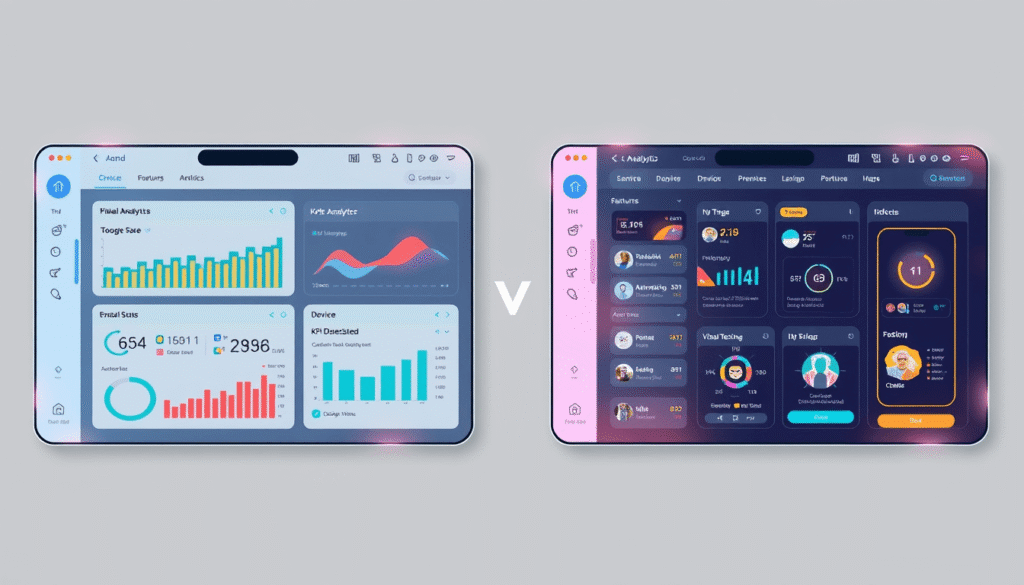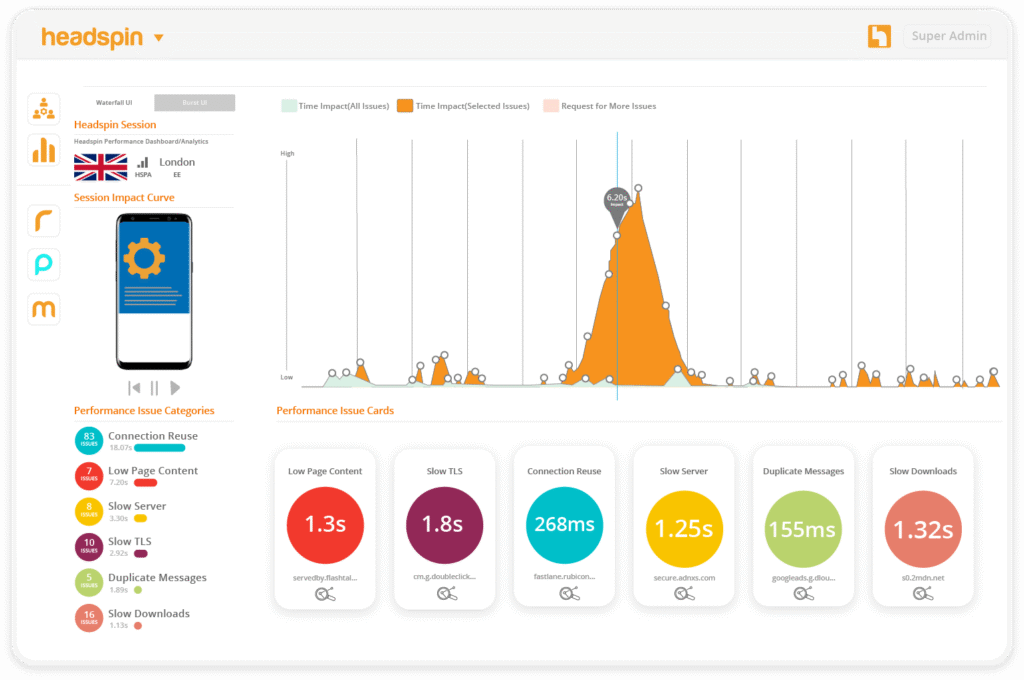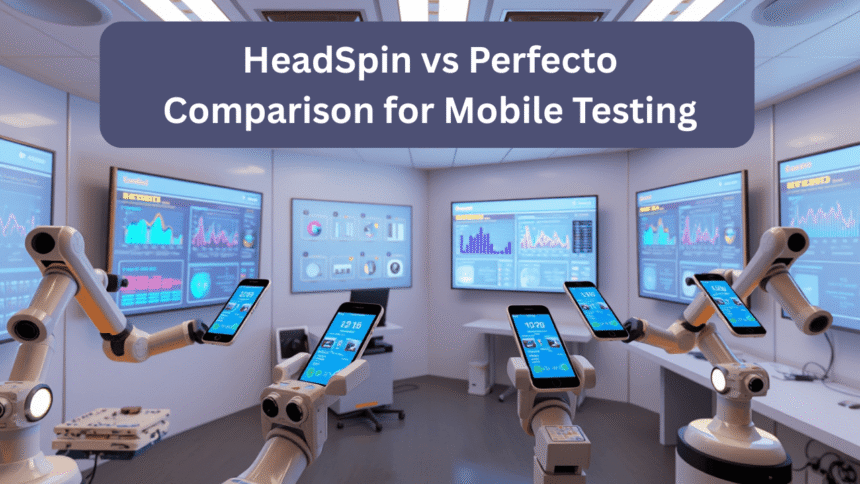Selecting between HeadSpin vs Perfecto shapes the speed, confidence, and cost of every release your team pushes. Both platforms promise huge device clouds, AI-driven analytics, and out-of-the-box pipeline hooks, yet they tackle quality-engineering pain points from distinct angles. This conversational guide walks through each feature, benchmark, and budget factor—so you can decide which service keeps your apps crash-free and customers happy. By the end, you will have met the keyword HeadSpin vs Perfecto three times and gained a clear action plan for 2025.
Why the Choice Matters for Modern Mobile QA
Mobile users judge an app within seconds; one glitch can slash ratings overnight. Engineering teams must therefore validate builds across thousands of real device-OS combos, various network conditions, and rapidly evolving chipsets. Maintaining such breadth in a local lab drains time and money, which is why cloud testing services have become non-negotiable.
Both tools under review let you run automated suites on genuine hardware located around the globe, catching sensor hiccups and radio drop-outs that emulators miss. They also integrate with continuous-integration runners, so every commit triggers tests automatically. Yet differences in deployment flexibility, analytics depth, and parallel-execution strategy change how quickly you diagnose failures and how much you spend per month.
Data insights now rank alongside bug counts in executive reports. One service leans on granular key-performance indicators (KPIs) like frame render time, while the other focuses on visual dashboards for rapid root-cause discovery. If your stakeholders prefer spreadsheets full of metrics, one option may shine; if they favor high-level heatmaps, the other could fit better. Understanding those nuances shields you from re-platforming headaches a year after rollout.
Feature Face-Off: Device Clouds, Automation, and AI Insights

Real Device Coverage and Deployment Models
HeadSpin offers a network of real phones distributed across more than forty countries, including SIM-enabled devices for authentic voice and data tests. You may run in a shared public cloud, spin up an isolated private instance, or even host a miniature rack inside your data center for strict compliance needs. Perfecto advertises what it calls the largest combined pool of real and virtual devices, paired with burst capacity that scales when nightly builds spike. If your company faces regional data restrictions, dedicated hardware on-premise might tip the scales toward one vendor; if burst elasticity is mission-critical, the other may be the safer bet.
Automation Framework Support and Pipeline Integrations
Script writers will find both services compatible with popular open-source frameworks: Appium, Selenium, Espresso, and XCUITest. HeadSpin provides a straightforward REST API, making it simple to create sessions directly from any build server. Perfecto extends support to behavior-driven tools like Cucumber and supplies a no-code recorder that turns manual explorations into maintainable scripts. Teams with a wide skill range may appreciate that recorder, while groups already seasoned in code-heavy frameworks could value a slim, code-only approach.
Analytics, AI, and Performance Monitoring
HeadSpin captures more than 130 KPIs, from battery drain to motion jitter, then applies anomaly detection to flag hidden regressions. Perfecto emphasizes machine-learning noise filtering, displaying heatmaps that highlight flaky locators or slow network hops in bright colors. Both pipe alerts into your chosen messaging channel and issue tracker, but one focuses on raw data science, the other on visual storytelling. Evaluate which reporting style resonates with developers, testers, and managers alike.
| Capability | HeadSpin | Perfecto |
|---|---|---|
| Global device sites | 40+ countries, SIM ready | Large cloud with real & virtual hardware |
| Deployment options | Public, private, hybrid, on-prem | Public cloud plus dedicated VMs |
| No-code creation | Not included | Built-in script recorder |
| AI / analytics style | KPI-heavy, anomaly alerts | Visual heatmaps, ML noise filter |
| Parallel scaling | Unlimited by design | Elastic burst during peak loads |
| Reporting focus | Session replays & timelines | Dashboards & root-cause panels |
Performance Benchmarks and Real-World Results

Teams using HeadSpin have reported a 22 percent drop in video startup times after examining its network quality charts and refining edge caching rules. Manual explorers praise the low-latency remote-control channel, saying gestures feel close to local, which accelerates reproduction of intermittent glitches. Meanwhile, Perfecto users highlight dramatically shorter regression cycles; one enterprise ran ten thousand parallel browser-mobile tests overnight and trimmed execution from six hours to forty-five minutes by leveraging burst mode. Test leads also note a significant decrease in false negatives after adopting the platform’s self-healing locator mechanism.
Latency matters, but stability under stress seals release windows. HeadSpin enables replay of entire network traces across 3G, 5G, and Wi-Fi, allowing side-by-side performance comparisons. Perfecto simulates contextual factors like low battery or GPS jumps, surfacing issues a plain UI script would miss. Whichever scenario mirrors your production challenges should weigh heavily in your final decision.
Pricing, Support, and Total Cost of Ownership
Pricing for both solutions follows a per-concurrency model, yet the fine print can differ. HeadSpin’s menu spans month-to-month licenses, long-term enterprise packages, and bespoke on-prem bundles, making it an appealing option for organizations with unpredictable project spikes or strict regional laws. Perfecto wraps cloud access, analytics, and authoring seats into a single, predictable invoice that many finance departments prefer.
Support models diverge as well. HeadSpin pairs enterprise clients with a named solutions engineer who reviews weekly metrics and suggests optimizations. Perfecto offers round-the-clock live chat for all tiers, with a dedicated success architect at higher plans. If you value human coaching, the first tool might serve you better; if self-service portals suit your culture, the second could suffice.
Remember to evaluate hidden costs such as video retention limits, extra device minutes, or premium compliance zones. Building a simple spreadsheet that compares cloud rental to local lab upkeep—equipment depreciation plus staffing—often shows that cloud still saves money over the long haul.
Which Platform Fits You Better?
Your perfect pick hinges on workflow style, compliance boundaries, and release velocity goals.
Quick-pick checklist
- Choose HeadSpin if you need on-prem racks, ultra-granular performance metrics, or globally dispersed SIM devices.
- Choose Perfecto if you want no-code script creation, elastic burst scaling, and dashboard-driven reporting that non-technical stakeholders grasp instantly.
Smaller teams should start with free trials or sandbox accounts, running identical smoke suites on both clouds for a sprint. Large enterprises often pilot the two side by side, measuring failure capture rate and cost per test minute before signing multi-year deals.
Conclusion
Choosing between HeadSpin vs Perfecto ultimately depends on your team’s workflow, testing goals, and infrastructure needs. Both platforms offer robust features, real-device access, and powerful integrations—but how they deliver those benefits varies. By aligning the tool’s strengths with your priorities—whether that’s scriptless testing, deep performance insights, or on-premise flexibility—you can confidently build a QA process that scales with your product in 2025 and beyond. The HeadSpin vs Perfecto debate comes down to which platform best matches your long-term testing strategy and team capabilities.
Also read: Fortnite Refund: FTC Sends Out $126 Million to Players Affected by Unwanted Charges
FAQs
Q1: Which tool handles test-driven development better?
Both integrate with modern CI platforms and support TDD and BDD out of the box.
Q2: Are these services secure enough for regulated data?
Yes—they provide encryption, compliance certifications, and options for private environments.
Q3: Can beginners ramp up quickly?
One service offers a no-code recorder, while the other delivers extensive guided onboarding.
Q4: Is unified web-and-mobile testing supported?
Yes, either platform lets you run mixed-channel suites with consolidated reporting.

